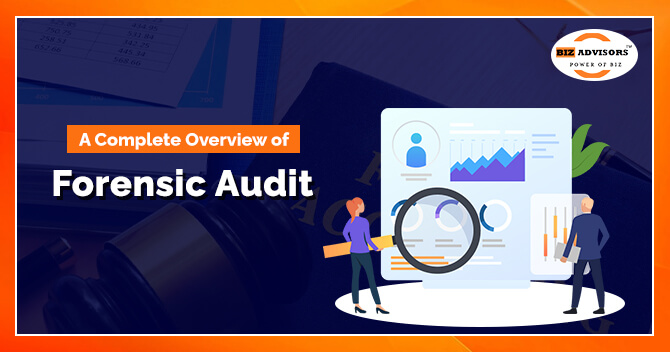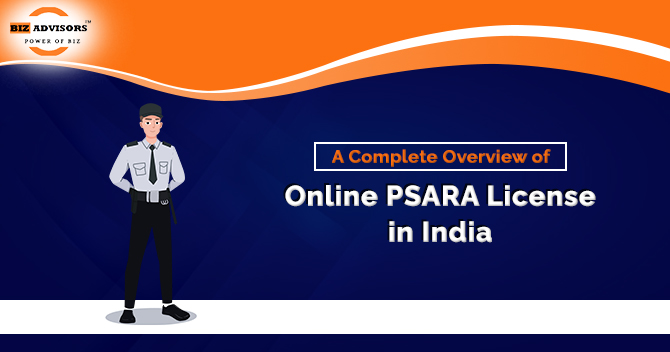Forensic Audit systemizes the verification of the accounts of a corporation or enterprise on a broad scale for presenting robust proof in a court of law concerning monetary funds regulation. Forensic Audit certainly provides an instantaneous support system in channelizing the scrutiny of the cogency of the audit mechanisms and establishes a reinforced link between the ideal pattern of law and corporate financial affairs. Therefore, every firm must undergo the procedural requirements of Forensic Audit to avoid any kind of problems in the effective regulation of the corporation’s affairs in a well-organized format.
A Forensic Audit is performed to unveil the forgery, embezzlement, and multitudinous financial delinquencies to ensure the smooth functioning of the corporation in a social capacity. Forensic Audit primordially uplifts the standards of a firm by maintaining the integrity of financial stability and guaranteeing efficacious operational management of the firm in financial discretion. It determines an efficacious model of the financial department on a wide platform and also comprehensively seeks a better normative approach to defining the financial status of a corporation. In this blog post, you will learn about the nuances concerning Forensic Audits in a detailed manner.
Operational Mechanism Concerning the Forensic Audit
A forensic audit goes through the identical steps as a conventional financial audit—planning, acquiring information, and composing a study in addition to a prospective court appearance. Both parties’ attorneys present evidence that either shows or disconfirms the deceit and establishes the losses incurred. If the case goes to trial, they deliver their conclusions to the judge and the client.
Creating the Investigation Plan
During the preparation step, the forensic auditor and team will design their inquiry to accomplish goals, such as:
· Figuring out what fraud, if any, is occurring
· Figuring out the time frame the scam occurred in
· Identifying the methods used to hide the fraud
· The fraud’s offenders’ names
· Calculating the damage incurred as a result of the deception
Gathering Information
The evidence gathered should be sufficient to establish the identity of the fraudster(s) in court, show the specifics of the fraud plan, and provide documentation of the financial losses incurred and the parties impacted by the scam.
Reporting
If the client chooses to pursue legal action, a forensic audit requires that a written statement regarding the fraud be provided to them.
The report ought to contain at least:
· The report’s conclusions
· An overview of the information gathered
· A breakdown of the fraud’s methodology
· Recommendations for preventing similar scams in the future, such as enhancing administrative procedures
Proceedings in court
To explain the evidence gathered and how the team identified the culprit, the forensic auditor must be present throughout court hearings. To make the fraud evident to those who are not familiar with legal or accounting jargon, they should simplify any complicated accounting concerns and explain the case in layman’s terms.
Procedural Framework Concerning the Forensic Audit
The Following is the procedural framework concerning the Forensic Audit:
Step 1) To envisage the investigation and get to know your client: An impartial business or team of investigators is always tasked with conducting a forensic audit to ensure a truthful, objective audit and inquiry. Therefore, anytime such a firm accepts a request to carry out a forensic audit, its first step is to ascertain whether they have the required knowledge, abilities, and competence (auditor) to proceed with such an inquiry.
Step 2) To plan the audit investigation and strategy: The first step in a forensic audit before execution is planning the inquiry.
Before preparing the investigation, they should be certain of the ultimate categories of the report. These are listed below:-
1. Identifying the type of fraud that has been perpetrated,
2. Fieldwork Gather Data and Acquire Proof
3. Determining the scam’s duration of operation and the means used to hide the fraud
4. Finding the perpetrator(s) and/or masterminds behind the deception
5. Calculating the damage to the client’s and the company’s finances
6. Gathering Evidence that Can Be Used in Court Proceedings
7. Measurement of Frauds[1], Analysis, Evaluation, and Impact Assessment of the Evidence
8. Giving counsel to stop fraud and track its recurrence.
Step 3) Collecting Information for the Investigation: To gather evidence, forensic auditing follows a set of prescribed methods.
The following methods can be employed by investigators in the direction of acquiring evidence. These are listed below:-
1. Testing procedures that pinpoint the gaps in the collection of proof that the fraud will be committed
2. Using analytical techniques to create comparisons across various company segments or analyze trends over time
3. Investigators can use computer-assisted audit techniques to pinpoint the “time and location” of pertinent details being changed or tampered with in the computer system.
4. Interviews and conversations with staff
5. Concrete approaches such as cash counts, reconciliations, and evaluations of non-financial paperwork.
Step 4) Notification and Documentary evidence:The reporting phase is a forensic audit’s most recognizable component. Following their investigation and collection of evidence, the investigating team is required to disclose their findings.
Step 5) Court Proceedings, Fraud Prevention, and Applying Judgment: The audits that typically result in legal or judicial procedures are expanded upon in the final stage. As previously noted, the auditors will provide litigation assistance, and they will be called to court and involved in the advocacy process and trials.
Conclusion
The aforementioned text imparts a conspicuous analysis concerning the interrelated mechanisms of Forensic Audit. A forensic Audit can be referred to as the reviewing of the financial records of a firm or enterprise. This certainly forms a substratum for a robust financial department of a corporation and also enhances the firm’s affluence in systemizing the network of monetary records. Forensic Audit provides a big help to the proprietor of a company in determining the financial stability in the long run. Our legal luminaries at BizAdvisors.io provide an aggrandized support system in the context of assisting individuals in going through the procedural formalities of Forensic Audit without any difficulty. You can freely contact our legal experts at BizAdvisors.io for any kind of assistance or help concerning the structural framework of Forensic Audit in a systematic manner.
Read our article:Everything You Need to Know About Tax Audit
 9559179325
9559179325 9559179325
9559179325





